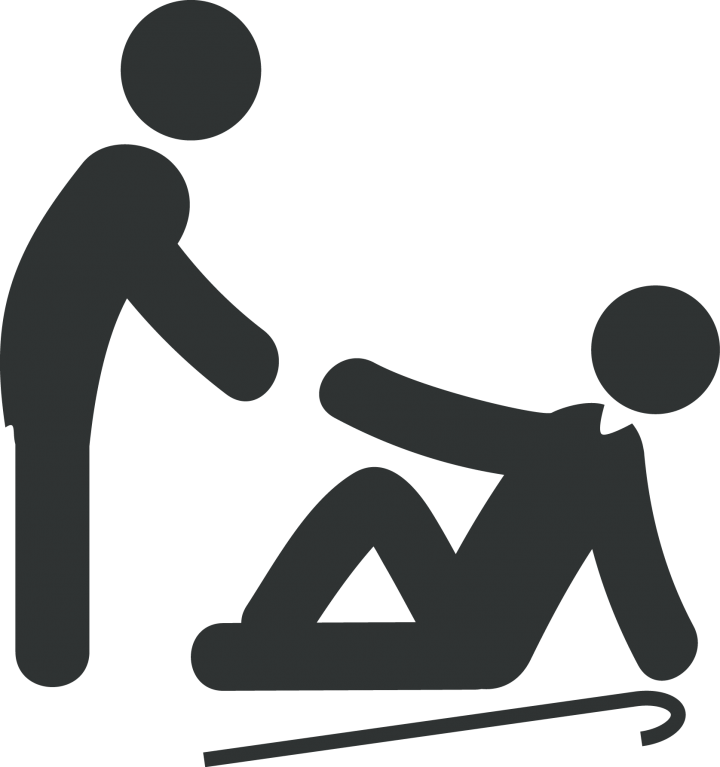Share
Fall risk factors that impact people with intellectual and/or developmental disabilities
 Did you know that falls are a leading cause of injury for seniors and people with intellectual and/or developmental disabilities (I/DD)? Falls cause more than 90% of all hip fractures, and 80% of those who survive a hip fracture lose their ability to perform many of the functions of everyday living. 20% of seniors (including those with I/DD) who suffer a hip fracture die within one year. Many people with I/DD may not have the immediate physical reactions that help to protect from serious injury when a fall occurs. Helping people with I/DD and their circle of support to recognize risk factors that lead to falls could help reduce injury and possibly save someone’s life.
Did you know that falls are a leading cause of injury for seniors and people with intellectual and/or developmental disabilities (I/DD)? Falls cause more than 90% of all hip fractures, and 80% of those who survive a hip fracture lose their ability to perform many of the functions of everyday living. 20% of seniors (including those with I/DD) who suffer a hip fracture die within one year. Many people with I/DD may not have the immediate physical reactions that help to protect from serious injury when a fall occurs. Helping people with I/DD and their circle of support to recognize risk factors that lead to falls could help reduce injury and possibly save someone’s life.
Falls are often associated with walking, but people who are sitting may also fall or slide to the floor due to weakness. People who are confused or agitated may fall. There are many environmental, physical, mental, and behavioral factors that increase the likelihood of falls for people with disabilities.
In supporting a person with I/DD, fall prevention should focus on helping the person and their circle of support to:
- Identify if a person is at risk for falls.
- Identify factors in the environment that may contribute to falls.
- Have a Falls Risk Assessment done for persons 60 years or older, or 50 or older with Down syndrome.
- Enact preventative measures, such as environmental screenings, reviewing medications, assessing nutritional status, and assessing the need for adaptive equipment.
- Participate in educational activities on how to move safely and exercise in a way that improves muscle tone, balance, and flexibility.
Many falls happen when people are going to bed, getting up, or when going to the bathroom. It is important to look at what a person’s functional abilities are in order to identify possible risks and ensure safety. People with diabetes, low blood pressure, anemia, and those on multiple medications are at risk for falls because these factors are associated with an increase in weakness and dizziness. Other factors such as age, other health conditions, and whether or not a person has fallen in the past are also important, as studies show that half of those who fall are likely to fall again.
Assisting people with maintaining adequate food and nutritional intake is an important and undervalued factor in fall prevention. Weakness, fatigue, and disinterest in food may cause people with I/DD to limit their food intake. An insufficient intake of nutritious foods can lead to nutrient deficiency especially in calcium and vitamin D. Poor nutritional intake can also lead to osteoporosis which causes bones to become brittle.
Another major factor that leads to falls is urinary incontinence. Urge incontinence often makes people rush to the bathroom. People who have muscle and joint pain or gait imbalances are likely to fall when rushing. Helping people to choose beverages that do not have a diuretic effect like coffee, tea, and soda, as well as helping people to use the bathroom regularly and at scheduled intervals, may help in reducing falls associated with urge incontinence.
Muscle and balance exercises help people to avoid falls even before fall risks become apparent. These exercises also help to reduce the reoccurrence of falls. People with I/DD should be encouraged to participate in exercises that strengthen the upper and lower limbs and improve balance. This will help people walk and lift objects in a safe manner. Exercises that focus on strengthening the front of the legs help people to better utilize walking aids, utilize handrails to walk up steps, and stand up from a chair.
About half of all falls are avoidable. By helping each person to know their risk factors and by employing strategies aimed at reducing those risk factors, people with I/DD and their circle of support can help to prevent falls and the debilitating effects that come with them. If you believe you or a loved one is at risk of falling, you can contact Premier HealthCare for assistance determining risk factors and creating a fall prevention plan. If you are not in the New York Metropolitan area, please contact your local healthcare provider for assistance.
